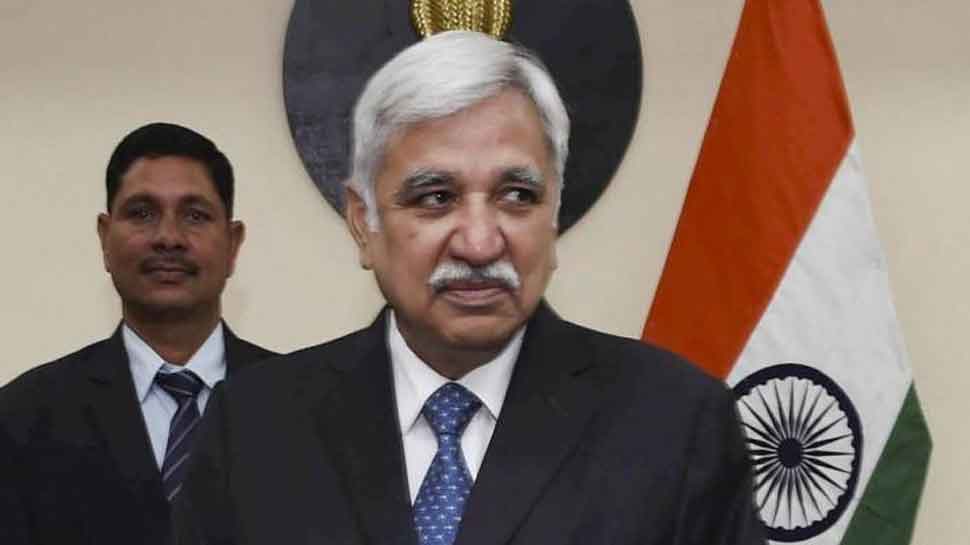5-phase Jharkhand election starting Nov 30, result on Dec 23
 NEW DELHI : The Election Commission (EC) on Friday announced that Assembly elections in Jharkhand will be held in five phases, beginning November 30, and the results will be announced on December 23.
NEW DELHI : The Election Commission (EC) on Friday announced that Assembly elections in Jharkhand will be held in five phases, beginning November 30, and the results will be announced on December 23.
The other days on which voting will take place are December 7, December 12, December 16, and December 20. The Assembly polls to the 81-member assembly in the Naxalism-affected state were held in five phases in 2014 as well.
The announcement was made by Chief Election Commissioner Sunil Arora at a press briefing here, adding that the Model Code of Conduct is now in force in the state. The five-year term of the state Assembly to set to expire on January 5, 2020, he said. Arora said Income-Tax officials will be deployed in every district for to effectively monitor the expenditure.
The election will be the third state poll since Prime Minister Narendra Modi led the BJP to a massive win in Lok Sabha elections in April-May. It will also be the third BJP-ruled state to hold elections this year, following Maharashtra and Haryana, which voted on October 21.
The BJP, which currently rules the state in an alliance with the All Jharkhand Students’ Union (AJSU), will hope for better results than it recorded in Maharashtra and Haryana. The party was widely expected to win both states by comfortable margins but suffered setbacks, winning fewer seats in each than it did in the last election, although it did emerge as the single-largest in each state.
In Jharkhand, the BJP government is led by Chief Minister Raghubar Das. The BJP rose to power after winning 35 seats in the 81-member house in 2014. Its ally, the AJSU, won 17, taking the NDA past the majority mark. The BJP’s dominant performance also saw it reduce the Congress to just six seats.
The BJP is in power the state, which has a large tribal population, and an alliance of opposition parties, mainly the Congress and the Jharkhand Mukti Morcha, is making a determined bid to oust the government headed by Chief Minister Raghubar Das.
With the polls coming on the heels of Assembly elections in Maharashtra and Haryana on October 21, its result will be keenly followed as political watchers believe that the opposition has been emboldened by the outcome in the two states where its numbers have been better than expectations.
Although the BJP, which was in power in Maharashtra and Haryana, emerged as the single largest party in both states, its numbers fell short of expectations even though the opposition was written off by the media and most pundits.
Raghubar Das is the first state chief minister to have completed the full term of five years in the state, long plagued by fractured mandate and unstable governments.
In the first phase on November 30, 13 Assembly constituencies will go to polls – prominent among these are Chatra (SC), Gumla (ST), Latehar (SC), Daltonganj and Garhwa. In the second phase on December 7, 20 Assembly constituencies, including Jamshedpur East, Jamshedpur West, Chaibasa (ST), Khunti (ST) and Simdega (ST), will vote.
Seventeen Assembly constituencies will exercise their franchise in the third phase on December 12 — these include Kodarma, Hazaribagh, Simaria (SC) and Ranchi. In the fourth phase on December 16, 15 constituencies, including Jamua (SC), Giridih, Dumri, Bokaro, Dhanbad and Jharia, will vote. In the final phase on December 20, 16 Assembly constituencies will go to polls — among these are Litipara (ST), Dumka (ST), Godda and Mahagama.
Over the course of three Assembly elections in the state, the Bharatiya Janata Party (BJP) has been the dominant force, followed by the Shibu Soren’s Jharkhand Mukti Mocha (JMM).
In the 2014 state elections, the BJP emerged as the single largest party with 37 seats in the 81-seat Assembly. While the JMM secured 19 seats, former chief minister Babulal Marandi’s Jharkhand Vikas Mocha (JVM) won eight. The Congress, on the other hand, bagged six seats.
The BJP received 31.26% of the total valid votes, followed by JMM, Congress, and JYM at 20.43%, 10.46%, and 9.99%, respectively. Chief Minister Raghubar Das won with the highest margin of 41.7% in Jamshedpur East, while JMM’s Paulus Surin won with the lowest margin of 0.04% in Torpa.
Earlier in 2009, the BJP and the JMM secured 18 seats each with a vote share of 20.18% and 15.2%, respectively. While the Congress posted a tally of 14 seats and 16.16% of the valid votes, the JVM won 11 seats and 8.99% of the votes on its debut.
Among others, Lalu Prasad Yadav’s Rashtriya Janata Dal (RJD) and the All Jharkhand Students Union (AJSU) won five seats each, whereas two seats went to the Janata Dal (United).
The 2014 state elections in Jharkhand were also witnessed the least number of total contesting candidates at 1,136, compared to 1,451 in 2009 and 1,390 in 2005. However, the state registered the highest voter turnout at 66.42% in 2014.

